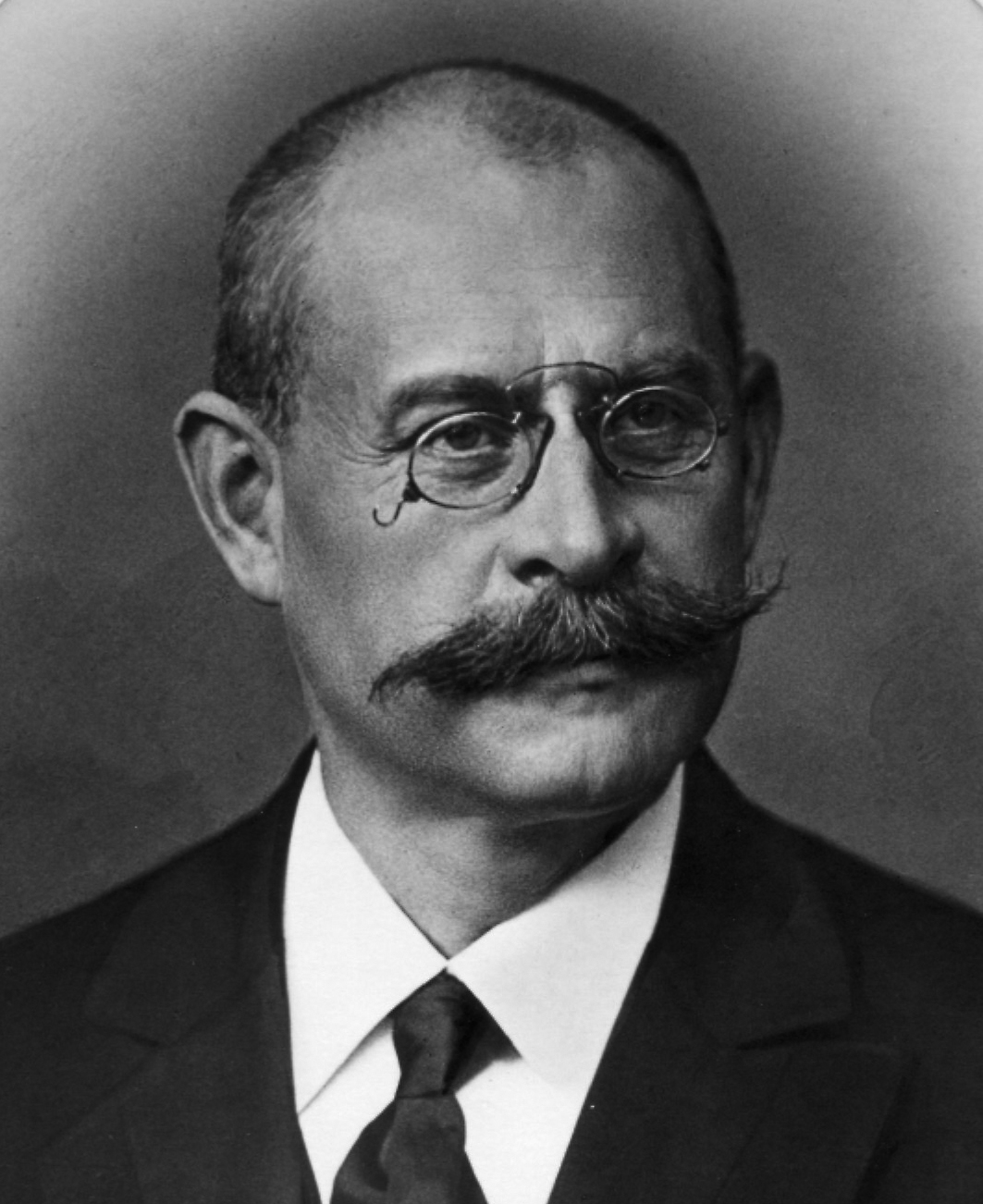- Georg Knorr
Infobox Person
name = Theodor Georg Knorr
caption = Georg Knorr
birth_date =November 13 ,1859
birth_place =Ruda ,West Prussia
death_date =April 15 ,1911
death_place =Davos ,Switzerland
other_names =
known_for = Invention of railway air brakes
occupation = Engineer
nationality = Prussian, GermanTheodor Georg Knorr (born
November 13 ,1859 inRuda ,West Prussia ; diedApril 15 ,1911 inDavos ,Switzerland ), was anengineer andentrepreneur on the field ofrailroad technology and founder of the companyKnorr-Bremse .Life and work
After studies in mechanical engineering, Georg Knorr worked at
Krefeld 's railroad administration. In 1884 he joined the Berlin branch of the American engineerJesse Fairfield Carpenter 's enterprise (at "Schöneberger Ufer 17" inBerlin Zoologischer Garten), which promoted the introduction to the German market of the bicameral air brake produced by Carpenter. In 1893 Knorr took over the company "Carpenter & Schulze", transferred the production to Berlin-Britz and in 1900 he even developed a new brake, "Knorr's single chamber express brake". Now he concentrated on the production of his brake, the company's name however remained unchanged. From 1905 on, the "Knorr brake" entered the German railroad services for use at goods trains and soon became the standard brake for all European railroads; the "Carpenter brake" remained insignificant in Europe.To start the mass production of his brake, Knorr moved the firm to a factory building at "Neue Bahnhofsstraße 11/12" (which was later named "Alte Fabrik") at Boxhagen-Rummelsburg in autumn 1904. In 1905 he eventually established the enterprise "Knorr-Bremse Gmbh" and also bought the neighbouring plot of land no. 13/14 so he could expand the production. There he built the so-called New Factory ("Neue Fabrik"). Because this plant as well could soon no longer satisfy the increasing demand, annexes were erected in the "Hirschberger Straße" beyond the train tracks.
Together with engineers Kunze and Hildebrand, Knorr pushed the development of railway air brake systems. They developed the "Kunze-Knorr brake" (a graduated-release composite brake, which can be tightened and relased at will) and later the "Hildebrand-Knorr brake" (another graduated-release brake that simultaneously affects all cars of a train). The factory's profit was so great that in 1911 the enterprise was transformed into the "Knorr Brake Corporation" ("Knorr-Bremse AG").
In 1910, Georg Knorr had to lay down the company's management for health reasons and eventually he died during a cure in
Davos in 1911. Because the family had its residence in Berlin's Lichtenberg district, Knorr was buried at the family's tomb at today's "Robert-Siewert-Straße".Only after Knorr's death, from 1913 to 1916, the facades of the factory buildings received their uniformal design after plans by
Alfred Grenander , by means of altering windows, applying brick dressings and by addition of arcades and sandstone reliefs to the parapets, pillars and dormers. On the yards, annexes (lateral and parallel wings) were added and an own heat plant was erected. To the main plant in the "Hirschberger Straße" a tunnel-like connection street was built. After theFirst World War and theGreat Depression , the company was again able to operate profitably. In 1928 Knorr's heirs had another representative office building built, with tower-like dormers at three corners (whereby the western tower, directly facing the train line, is somewhat higher and has some quite large windows, while the others were devised without windows). All that was also undertaken after plans by Grenander and followed the previous line of design – the total area covered by buildings of Knorr-Bremse on both sides of the train tracks now measured 24,380 ms².Both Berlin locations of the former Knorr-Bremse AG are historically preserved. In one of the buildings, a "Knorr museum" was established.
History of the company "Knorr-Bremse"
See
Knorr-Bremse .Tribute to Georg Knorr
Numerous institutions and roads were named after "Georg Knorr", e.g.:
*The sports club "Georg Knorr" in Berlin and Frankfurt, withjudo , jiu jitsu,gymnastics ,fitness competition s, etc that particpates in the first national league of Germany [http://www.sv.georgknorr.de/ Homepage of SV GK. De icon ]
*A business park in Berlin at the intersection of "Landsberger Allee/Märkische Allee'
*The ' 'Knorrpromenade' ' inBerlin-Friedrichshain , which was lined with buildings from 1911 on and received its name after the death of Georg Knorr
*"Georg-Knorr-Straße" inBerlin-Marzahn
*"Georg-Knorr-Straße" inHohenbrunn inMunich References
External links
*Meyers Neues Lexikon, VEB Bibliographisches Institut Leipzig, 1962
* [http://www.luise-berlin.de/lexikon/FrKr/v/Verwaltungsgebaeude_der_Knorr_.htm History of the Knorr-Bremse AG by "Luisenstädtischer Bildungsverein"]
* [http://www.luise-berlin.de/lexikon/FrKr/w/Wohnanlage_Knorrpromenade.htm Notes on the "Knorrpromenade" by "Luisenstädtischer Bildungsverein"]
* [http://www.berlin.de/ba-marzahn-hellersdorf/aktuelles/presse/archiv/20050617.1455.27227.html Press conference: celebration of "100 years of Knorr-Bremse" at Berlin and renaming of a tramway stop on June 17, 2005]
* [http://www.gewerbepark.georgknorr.de Homepage of the business park at the real estate management of Knorr-Bremse]
* [http://www1.messe-berlin.de/vip8_1/website/MesseBerlin/htdocs/www.innotrans.de/de/Presse/Report/Report_1_DE.pdf "InnoTrans" - magazine for rail traffic technology, no. 1 from May 2005]
Wikimedia Foundation. 2010.
